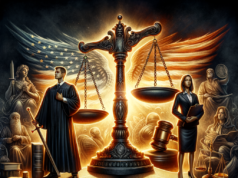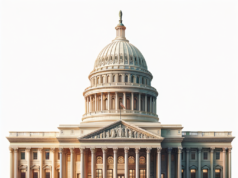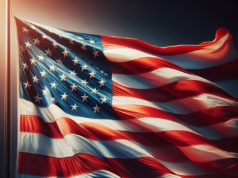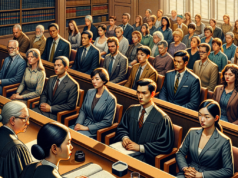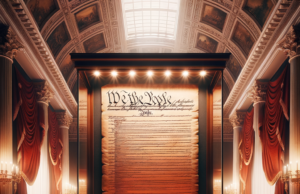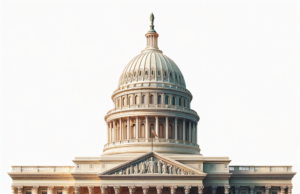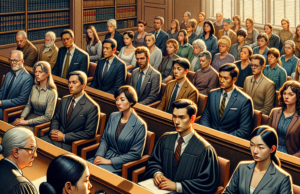Contents
- 1 Understanding the Historical Context of Concealed Carry Laws in the United States
- 2 Key Legislative Changes: A Comprehensive Overview of Recent Developments
- 3 The Impact of New Concealed Carry Laws on Public Safety and Crime Rates
- 4 Analyzing the Public’s Response: Supporters and Opponents Weigh In
- 5 Regional Variations: How Different States Are Adapting to New Regulations
- 6 Future Implications: What These Changes Mean for Gun Owners and Society

In recent months, the landscape of concealed carry laws in the United States has undergone significant transformations, prompting widespread discussion and debate. As states reevaluate their regulations surrounding the carrying of concealed firearms, the implications of these changes extend far beyond legal frameworks, influencing public safety, crime rates, and societal attitudes towards gun ownership. This article delves into the historical context of concealed carry laws, outlines key legislative changes, assesses their impact on public safety, and explores the varied responses from the public and state governments.
Understanding the Historical Context of Concealed Carry Laws in the United States
Concealed carry laws in the United States have a complex history that reflects the nation’s evolving attitudes toward firearms and self-defense. The Second Amendment, ratified in 1791, has long been interpreted as a safeguard for individual gun ownership, but the specifics of carrying firearms in public have varied widely. In the early 20th century, many states began enacting restrictive concealed carry laws, often requiring permits and justifiable need. Over the decades, a gradual shift occurred, particularly in the 1980s and 1990s, with a growing number of states adopting “shall-issue” laws, which mandated that permits be granted to applicants who met specific criteria. This historical backdrop sets the stage for the recent wave of legislative changes that have further altered the concealed carry landscape.
Key Legislative Changes: A Comprehensive Overview of Recent Developments
In the past year, several states have enacted significant changes to their concealed carry laws, reflecting a broader trend toward liberalizing regulations. Notably, states like Texas and Florida have passed laws allowing permitless carry, enabling individuals to carry concealed firearms without a permit or training. Additionally, states such as Georgia and Alabama have expanded their “stand your ground” laws, further empowering individuals to use firearms in self-defense situations. These legislative shifts have sparked intense discussions about the balance between individual rights and public safety, as lawmakers grapple with the implications of these new regulations.
The Impact of New Concealed Carry Laws on Public Safety and Crime Rates
The impact of newly enacted concealed carry laws on public safety and crime rates remains a contentious issue among policymakers and researchers. Proponents argue that allowing more individuals to carry concealed weapons enhances personal safety and deters crime, citing studies that suggest a correlation between increased gun ownership and reduced crime rates. Conversely, critics warn that more guns in public spaces could lead to higher rates of gun violence and accidental shootings. Recent data from states that have implemented permitless carry laws indicate mixed results, with some reporting increases in gun-related incidents while others maintain stable or declining crime rates. This ongoing debate underscores the complexity of assessing the real-world implications of these legislative changes.
Analyzing the Public’s Response: Supporters and Opponents Weigh In
Public response to the recent changes in concealed carry laws has been polarized, reflecting deep-seated beliefs about gun ownership and personal safety. Supporters of the new laws argue that they empower law-abiding citizens to protect themselves and their families, emphasizing the right to self-defense as a fundamental aspect of personal freedom. Organizations such as the National Rifle Association (NRA) have lauded these changes as victories for gun rights. Conversely, opponents, including various gun control advocacy groups, express concern that these laws will lead to increased gun violence and undermine community safety. Public opinion polls reveal a divided electorate, with many Americans advocating for stricter gun control measures while others staunchly defend the right to carry firearms.
Regional Variations: How Different States Are Adapting to New Regulations
The response to changes in concealed carry laws has varied significantly across different states, reflecting regional attitudes toward firearms and public safety. In states like California and New York, where gun control measures are traditionally more stringent, lawmakers have pushed back against the trend toward liberalization, seeking to maintain strict permitting processes and training requirements. Conversely, states in the South and Midwest, such as Tennessee and Indiana, have embraced more permissive laws, often viewing them as essential to individual rights and personal security. This patchwork of regulations highlights the diverse cultural and political landscapes that shape gun policy across the United States, leading to a fragmented approach to concealed carry laws.
Future Implications: What These Changes Mean for Gun Owners and Society
As concealed carry laws continue to evolve, the future implications for gun owners and society at large remain uncertain. For gun owners, the shift toward more permissive laws may foster a sense of empowerment and increased responsibility in carrying firearms. However, it also raises questions about the adequacy of training and education for those who choose to carry concealed weapons. For society, the long-term effects of these changes on public safety and crime rates will likely depend on how effectively states implement and enforce their regulations. As the national conversation around gun rights and public safety persists, the outcomes of these legislative changes will be closely monitored, shaping the future of concealed carry laws in the United States.
In conclusion, the recent changes to concealed carry laws in the United States represent a significant shift in the legal and cultural landscape surrounding firearms. As states navigate the complexities of these new regulations, the ongoing dialogue among supporters and opponents will play a crucial role in shaping future policies. The implications of these changes extend beyond legal frameworks, influencing public safety, crime rates, and societal attitudes toward gun ownership. As the nation grapples with these issues, it is essential to consider the diverse perspectives and experiences that inform the ongoing debate over concealed carry laws.



